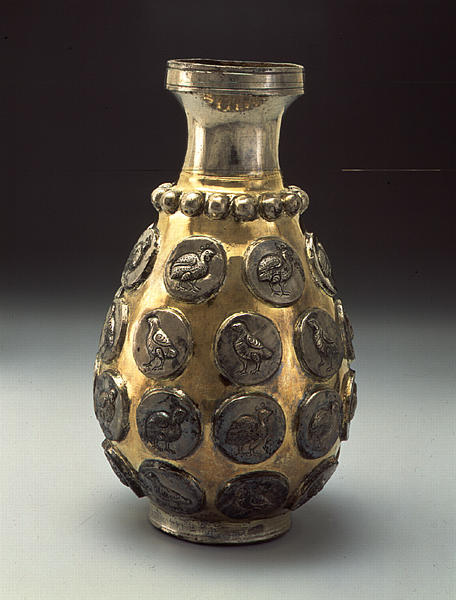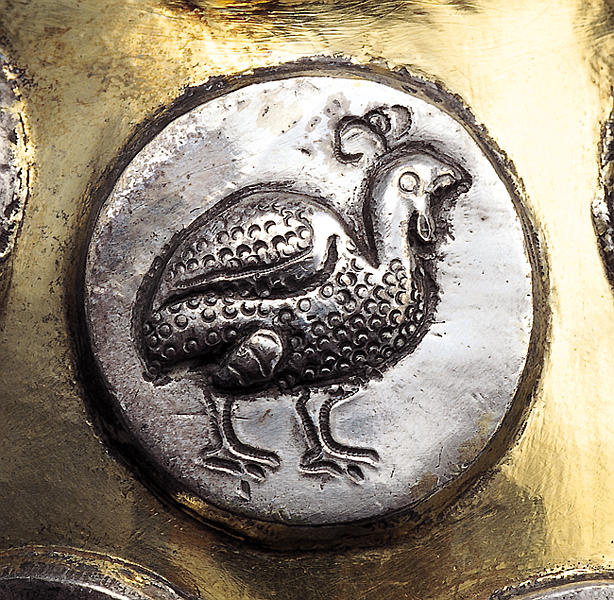鳥メダイヨン瓶
- イラン
- ササン朝ペルシア
- 6-7世紀
- 銀鍍金
- H-19.7 D-6
同一の装飾を持つ容器が対で、あるいは複数で存在するというのは、ササン期(226-651年)から生き残ってきた銀器の中では極めてまれなことである。この2個の壷は、大きさ、プロポーション、装飾、製作の技量においてほんのわずかの違いしかなく、両方とも同一の名人の手になるものかもしれない。高浮き彫りの盛り上がった連珠文が頚部の付け根を1周しており、4列の盛り上がった円盤が壷の胴部を上から下まで取り巻いている。円盤中部には鳥の姿がたがね彫りされており、ほろほろ鳥と、鶉あるいは雉の雛が交互に並んでいる。鳥は列ごとに交互に右あるいは左を向いて表現されている。
メダイヨンについて
銀製容器の胴部から規則的な間隔で突き出ている鋭く盛り上がったメダイヨンは、印象的な珍しい装飾形態であり、カット・グラスや水晶で作られた高価な容器をまねて採り入れられたものである。ササン後期からイスラム初期にかけてこのような素材を使って作られた作品では、円盤と円盤の間の面は削り取られて、魅力的な反射性をそなえた円形が高浮き彫りで残された。この2個の銀製壷にある装飾的な円盤は胴部から打ち出されたもので、地の部分に鍍金が施されることによってさらに際立ち、対比が強くなっている。
Catalogue Entry
Pairs or multiples of identically decorated vessels occur only rarely in the corpus of silver plate that has survived from the Sasanian period (A.D. 224-651). These two vases vary so slightly in size, proportion, decoration, and workmanship that both may have been executed by a single master. Raised beads in high relief encircle the base of the neck, and four rows of raised disks surround the body of each vase from top to bottom. Within the disks is the chased figure of a bird, alternately a guinea fowl and a quail or pheasant chick. The birds are represented in rows facing alternately to the right or to the left.
Sharply raised medallions, projecting at regular intervals from the body of a silver vessel, are a striking and unusual form of decoration adopted in imitation of precious cut-glass and rock-crystal receptacles.1 On late Sasanian and early Islamic works made from these materials, the surfaces are carved away between the disks, leaving the circles, which have an attractive reflective quality, in high relief. The decorative disks on these two silver vases are hammered out from the body and are given further prominence and heightened contrast by the gilding of the background.
POH
1. Splendeur 1993, p. 265, no. 114.
鳥メダイヨン瓶


